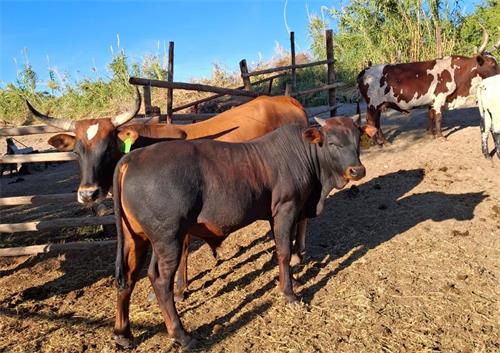As more cattle farms face rising temperatures across the globe, especially during the peak of summer, one challenge keeps showing up in conversations with livestock producers: heat stress and its effect on cow fertility. What used to be a seasonal inconvenience has turned into a serious, recurring obstacle in reproductive management. One of the most delicate aspects impacted by heat stress is follicular development—a key process that determines whether a cow will ovulate, conceive, or come back into heat empty-handed.

So how does heat actually interfere with follicle growth? And what can farmers, veterinarians, and researchers do about it? Let’s walk through what we know, what we’re seeing in the field, and how many producers in countries like the U.S., Australia, and Brazil are adapting to this changing pattern.
Heat Stress and Reproduction: More Than Just Temperature
When we talk about heat stress, we’re not just referring to a hot afternoon. It’s the cumulative effect of high temperature, humidity, solar radiation, and low air movement. Cows don’t sweat the way humans do. Their natural cooling mechanisms are limited, especially in dairy breeds like Holsteins, which are known to suffer more during heat waves.
Once a cow's core body temperature increases even slightly, it starts affecting key physiological systems. One of the first to get hit is the reproductive axis—the chain of hormonal events responsible for stimulating follicle development and ovulation. Farmers often notice subtle changes before anything shows up on paper: silent heats, delayed estrus, or lower conception rates.
But under the surface, things get even more interesting.
What Happens Inside the Ovary During Heat Stress?
Cow ovaries are in a constant rhythm of follicular waves. In each cycle, multiple small follicles grow, but only one (in most cases) becomes dominant and is selected for ovulation. This dominant follicle relies heavily on follicle-stimulating hormone (FSH) and luteinizing hormone (LH)—both of which are disrupted when cows are heat-stressed.
Here’s what researchers and vets have observed, especially using ultrasound:
Dominant follicles grow slower during heat stress.
Many follicles don’t reach full maturity; they regress prematurely.
Even if a follicle ovulates, the oocyte inside may be damaged.
Heat also impairs corpus luteum (CL) function, which is essential for progesterone production after ovulation.
So in practical terms, even if the cow looks like she’s cycling, the chance of her actually becoming pregnant is significantly reduced in high-heat environments.
How Ultrasonography Helps Farmers Track Follicular Health
Ultrasound has become one of the most trusted tools for assessing reproductive status in cattle. On farms in Texas, Queensland, and parts of southern Spain, it’s common practice now to use B-mode ultrasound to track ovarian structures in real time.
Here’s what producers and vets often look for:
Follicle size and count: A healthy dominant follicle typically measures between 12–20 mm in diameter. Under heat stress, sizes shrink, and many follicles stall before reaching maturity.
Corpus luteum development: A well-developed CL is a good sign the cow ovulated and has enough progesterone for pregnancy maintenance. Heat stress often causes smaller or underperforming CLs.
Ovarian fluid abnormalities: Anechoic (black) pockets of fluid can sometimes point to follicular cysts, which are more common in chronically stressed animals.
By checking ovarian development every few days during breeding season, farmers can make more informed decisions—like delaying artificial insemination (AI) during heat waves or switching to embryo transfer (ET) to improve conception odds.
Real-World Adaptations: What Global Farmers Are Doing Differently
From Arizona to Argentina, producers are tweaking management strategies to protect cow fertility from heat-related damage. Here are some of the approaches that are gaining traction:
1. Cooling Systems Around Breeding Time
Fans, misters, and shaded barns have always helped reduce heat, but now they're strategically used around estrus synchronization and AI timing. Research shows that even cooling cows for 3–5 days before breeding improves follicle development and increases conception rates.
2. Switching to Nighttime AI
In hotter regions, breeding now happens before dawn or after sunset. Studies from Israel and Florida confirm that nighttime insemination increases pregnancy rates by giving the cow a window of cooler weather for ovulation and sperm transport.
3. Supplementing with Antioxidants and Minerals
Heat stress causes oxidative stress at the cellular level, which can damage developing oocytes. Farms now use Vitamin E, selenium, and beta-carotene supplementation to support reproductive health during hot seasons.
4. Prioritizing Heat-Tolerant Breeds
Producers in Brazil and southern U.S. states are gradually moving toward crossbreeds like Brangus or Senepol, which retain some of the fertility of Bos taurus breeds but with the heat resilience of Bos indicus.
Understanding the Timeline of Follicular Damage
One of the most surprising things researchers have discovered is that the damage to follicles doesn’t happen instantly. It can start several days before ovulation, when the dominant follicle is still developing. This means managing heat stress should ideally begin well before insemination.
In some herds, producers even track follicular wave emergence using ultrasound, adjusting AI timing to match the healthiest follicular growth window. On larger farms, reproductive specialists may run ultrasound checks 2–3 times per week to time synchronization protocols more precisely.
Climate Change and Long-Term Reproductive Planning
With global temperatures trending upward, heat stress isn’t just a seasonal concern anymore—it’s a chronic management issue. The effects of even mild heat on ovarian function are now well-documented, and researchers in the Netherlands and Japan are investigating genetic markers for heat tolerance, including reproductive resilience.
Some farms are already using reproductive biotech like oocyte freezing, embryo transfer, and hormonal rescue protocols to counteract heat-induced fertility drops. These technologies, while still expensive, are likely to become more accessible as the industry adjusts to the new climate reality.
Final Thoughts from the Field
Talk to any seasoned farm vet, and they’ll tell you the same thing: when cows are stressed, reproduction is the first thing to take a hit. The reproductive system is delicate and depends on hormonal balance, nutrient availability, and internal temperature regulation. If even one piece of that puzzle shifts—like during a heat wave—everything else follows.
But with the help of ultrasound imaging, smart timing, better cooling, and nutritional support, farmers across the world are learning to stay one step ahead. By watching follicle development closely, even in hot months, they’re keeping reproduction rates high and herds productive.
And as more producers swap stories and share data from their own herds, we’ll keep discovering better ways to manage reproduction in a warming world.
tags: Cow Follicle Development


